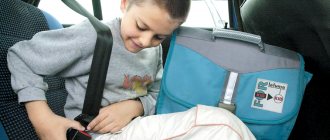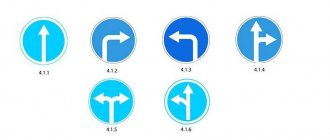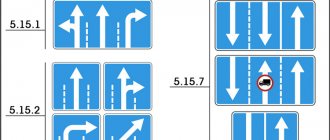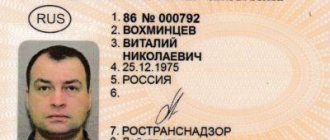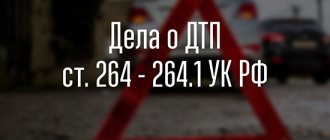Varieties
In practice, there are two types of railway crossings.
These include:
- One that is regulated. According to the rules, this type is equipped with a traffic light and a barrier. A person on duty is installed to monitor their work. Regarding traffic, such crossings are safer for people if we consider them from the point of view of the presence of warning signals. However, accidents often occur at such crossings.
- The move is not regulated. The railroad crossing road sign like a picture can be found in villages. They are considered less dangerous, since the road passes through the rails less often here. In addition, freight trains that do not have high speed often travel along such a road.
In places where there are tracks with fast locomotives moving along them carrying passengers, the first type of crossing is installed. This is due to the fact that during emergency braking, the composition can cause irreparable consequences for the life or health of the person in the car.
If a train collides with a passenger car at high speed, casualties in the passenger car cannot be avoided. This could be a woman or a man. However, this does not mean that an unregulated crossing can be ignored by the motorist. It is understood that a person should move through such a place with special vigilance. This mainly applies to night time.
Approach signs for railway crossings
Rules for turning around tram tracks outside an intersection
To safely approach a railway crossing, the distance from the warning sign to the intersection with the railway is strictly regulated by law.
It is the installation of a sign that can notify the driver of an upcoming crossing across the railway line.
Roads can be straight or winding; accordingly, the latter can pose a danger to the driver if he is not notified in advance by the appropriate sign.
Even if you take a straight road, there may be poor visibility due to fog, snowstorm or night time.
Therefore, timely information about approaching a railway crossing will ensure the safety of all wheeled vehicles.
Signs
A railway crossing sign is installed near such a crossing, and the icon indicates the designation of its type.
There are several options:
- there may be a single track in front;
- multi-track road.
If the tracks are single-track, this means that only one train can move on such rails, which goes in one direction. Such a road carries no less danger. When the train has passed, you can continue moving after you hear the permission signal.
A crossing road sign may indicate that there is a multi-track road ahead. This implies that composition can be expected from either side. The sign will warn of approaching trains. If the train has passed, but the prohibitory signal is still on, you should not move. Perhaps the train is moving from a different direction.
It should also be noted that a crossing sign is installed 200 meters or less before the crossing if we are not talking about a populated area. You need to pay attention to how many stripes are shown on the sign. Often such images are found in the coloring books of a child whose parents teach him safety from childhood.
When three stripes are drawn, this indicates that there are about 150 meters left to the tracks. Accordingly, 100 meters - two lanes and 50 - one. In photographs and in real life, the sign will look like a rectangular background with a red oblique line. Install it on the right side of the road.
For his safety, the driver must take into account the established rules at each interval of the roadway. According to GOST, it is stipulated that signs are also installed indicating that it is forbidden to move without stopping. This suggests that the driver must take the following action: stop the vehicle and make sure there are no trains.
When a train moves along the rails, you need to give way to it. In villages and other areas, most often, the stop does not last more than two minutes. This is due to the fact that during such a period of time the driver can fully assess the current situation and understand whether it is worth driving or not.
What signs are placed in front of a railway crossing without a barrier?
Warning signs are installed at a distance sufficient to alert the driver.
Regardless of whether there is a warning structure or not, the railroad crossing is indicated by special signs that drivers must pay attention to.
The warning sign looks like this: a white triangle edged with a red stripe. In the middle there is a train sign drawn in black. He is depicted as a steam locomotive.
The red border indicates that this sign is a warning. Accordingly, in such a situation, the driver will be required to comply with the established traffic rules.
Additionally, other road signs can be posted, which most often inform about the distance at which the crossing is located or that it is additionally equipped with a traffic light.
To indicate boundaries, there are special signs in the traffic rules. They are installed on both sides of the crossing. The following types of warning signs are found:
- The first option reports a single-track railway. In the rules it is designated as 1.3.1. Looks like a white cross with a red border;
- The second option, a multi-track road, is used in cases where the number of tracks is two or more. Depicted as a white cross edged in red, with an additional half of the cross underneath.
Based on this type of sign, the driver must determine the distance to the iron line and take appropriate action, for example, slow down. It is also important to pay attention to these signs, because they notify you of entering a high-risk area.
In fact, designating signs are installed in the city at a distance of 50-100 meters from the immediate crossing. When the rails pass outside the city, the distance increases to 150 - 300 meters. The reason is that on the highway the speed limit is higher and the driver needs more time to correctly navigate and brake.
Without barrier
The acquaintance must take place and there is a railway crossing sign with a barrier. This sign indicates that there is a crossing ahead, which was not equipped with a barrier. Similar paths are installed in villages with a small population.
The installation is implemented twice:
- Initially at a distance of 300 to 150 meters. The distance to the crossing is indicated.
- Less than 50 meters from the tracks.
This setting is needed to warn a person who missed the first sign.
It is understood that special care and attention will be required in this area. The agreed condition is that in urban areas the designations in question are installed extremely rarely. In the city, the sign is placed once - 50 or 100 meters before the tracks. Outside the populated area - a double installation of the sign is required, which may be accompanied by additional symbols.
For example, they install a traffic light, sound signals, etc. It is recommended to pay attention to multi-track roads that are not regulated. According to the photo, you need to make sure that there are no trains on all sides in this area, and then start moving.
With barrier
A railway crossing sign without or with a barrier is enshrined in the rules established according to road traffic. This sign can often be seen in photographs. The driver must automatically understand that he is talking about the location of the road ahead with a barrier. It is usually supplemented by signals or traffic lights.
Worth considering:
- adjustment is carried out automatically;
- the person on duty can also control it.
In a populated area, installation is organized once. The specified permit is placed outside the city twice.
Distance
The size depends on the zone in which the sign is installed.
Including:
- If it refers to a populated area, then it is placed once. The distance must be at least 50 meters to the tracks.
- If outside the village, warnings are posted twice. The first time was 200 meters before the danger and the second time was 50 meters away.
You can download the rules for installing signs that reflect the dependencies on the type of crossing. If we talk about adjustable crossings, then they install it 2 or 3 meters before the barrier. If there is an unregulated crossing ahead, then the installation is carried out at a similar distance from the last sign.
Punishment for violating the requirements of road sign 1.2
Failure to comply with the rules of passage of railway tracks, as well as other violations of current traffic rules, entail administrative liability. Its types are described in Article 12.10 of the Code of Administrative Offenses of the Russian Federation, depending on the severity of the offense committed.
In particular, a driver who violates the rules for approaching a railway track may face the following sanctions:
- A fine for driving through a red light, the amount of which can be equal to one thousand rubles.
- According to the law, violating the rules for traveling on railway tracks is fraught with deprivation of a driver’s license. In this case, the period during which the driver will not be able to drive his car can range from three months to six months.
- If the driver deliberately violated the rules for driving through the tracks again, then the court may deprive him of his license for up to one year.
Of course, you can appeal the punishment on appeal. However, if the license is not handed over on time, the period of sanctions will increase proportionately.
Author: Tatyana Viktorovna Kosykh, source.
Rules
You should also become familiar with the rules regarding moving.
It is necessary to understand the basic rules established regarding the signs in question:
- It is prohibited to stop at crossings;
- when there is a traffic jam behind the tracks, you cannot cross them;
- It is prohibited to organize parking closer than 50 meters to the tracks.
Motorists must understand that they cannot stop at crossings even for a short period of time, not to mention parking. Attention should be paid to the rules that indicate forced stops at crossings. This assumes that the stop was implemented through no fault of the driver. For example, a car has a malfunction. The car could also make an emergency stop, causing the car to stop on the rails.
In such a situation, rules apply that indicate the need to remove all passengers from the car and take them away from the rails for their safety. Next, one person is sent in both directions in order to be able to inform the train driver that the tracks are not clear. To do this, you need to pick up a flashlight or a rag and wave them.
You are also required to stay near the car at all times and sound alarms. If the train appears in the visibility zone, you need to run towards it and give signals. It should be taken into account that you should not move along the rails, but next to them. The duty officer should be made aware of what is happening. If these rules are not followed, the perpetrator faces punishment from the traffic police. There may also be an accident where people get hurt.
Features of installing signs 1.4.1-1.4.3 and 1.4.4-1.4.6
Rules for driving through intersections. Driving through controlled intersections
The road sign “Approaching a railway crossing” meets the requirements of GOST R 52290-2004, the installation of which has its own characteristics.
As a general rule, signs must be installed outside the city on two-lane and multi-lane roads on which traffic flows in both directions.
In this case, road signs must be duplicated before approaching the railway from different directions of traffic.
If the road has a one-lane direction of cars, then the sign is installed when the visibility of the railway crossing is less than three hundred meters.
Sign 1.4.1-1.4.3 is always mounted on the right side of the road surface, and signs 1.4.4-1.4.6 - respectively, on the left side of the road. The distance for installing these road signs is provided from 150 to 300 meters in proportion to the signs.
The meaning of signs 1.4.1 and 1.4.4 provides for approaching a multi-lane railway, 1.4.2 and 1.4.5 for a two-lane railway and, respectively, 1.4.3 and 1.4.6 for a single-lane railway.
STOP sign
Some people believe in dream books and zodiac signs, however, this cannot be done in the situation under consideration.
If the driver sees a stop sign, he needs to turn off the engine and make sure that it is safe to continue driving. This sign is placed near the tracks. However, it always has this designation. Need to remember:
- If the crossing is not regulated, you need to stop the car and make sure it is safe to move. All directions should be examined.
- If the stop is not made, it is a violation of the rules.
In a situation where there is a controlled crossing ahead, the stop sign does not have a decisive meaning. This is due to the fact that attention is paid to the traffic light. When the red light is on, you must stop the car. When there is no such signal, there is no need to stop.
When the traffic light is on
Traffic rules indicate:
- when the barrier is lowered or has already lowered, you cannot enter the crossing;
- if the red signal is on, you cannot drive onto the rails in any case, no attention is paid to the barrier here;
- when the duty officer gives a special signal, you cannot enter the rails;
- Different signals are not taken into account if a train is approaching a crossing.
In addition, you need to remember about the prohibitions on overtaking a vehicle that is moving in front, while entering the lane for oncoming traffic. Even if the train is not in sight, you cannot open barriers in the form of barriers yourself, and you should not use the crossing to transport special equipment. To move on the device’s rails at a speed of less than 8 kilometers per hour, you must obtain the consent of the person on duty.

